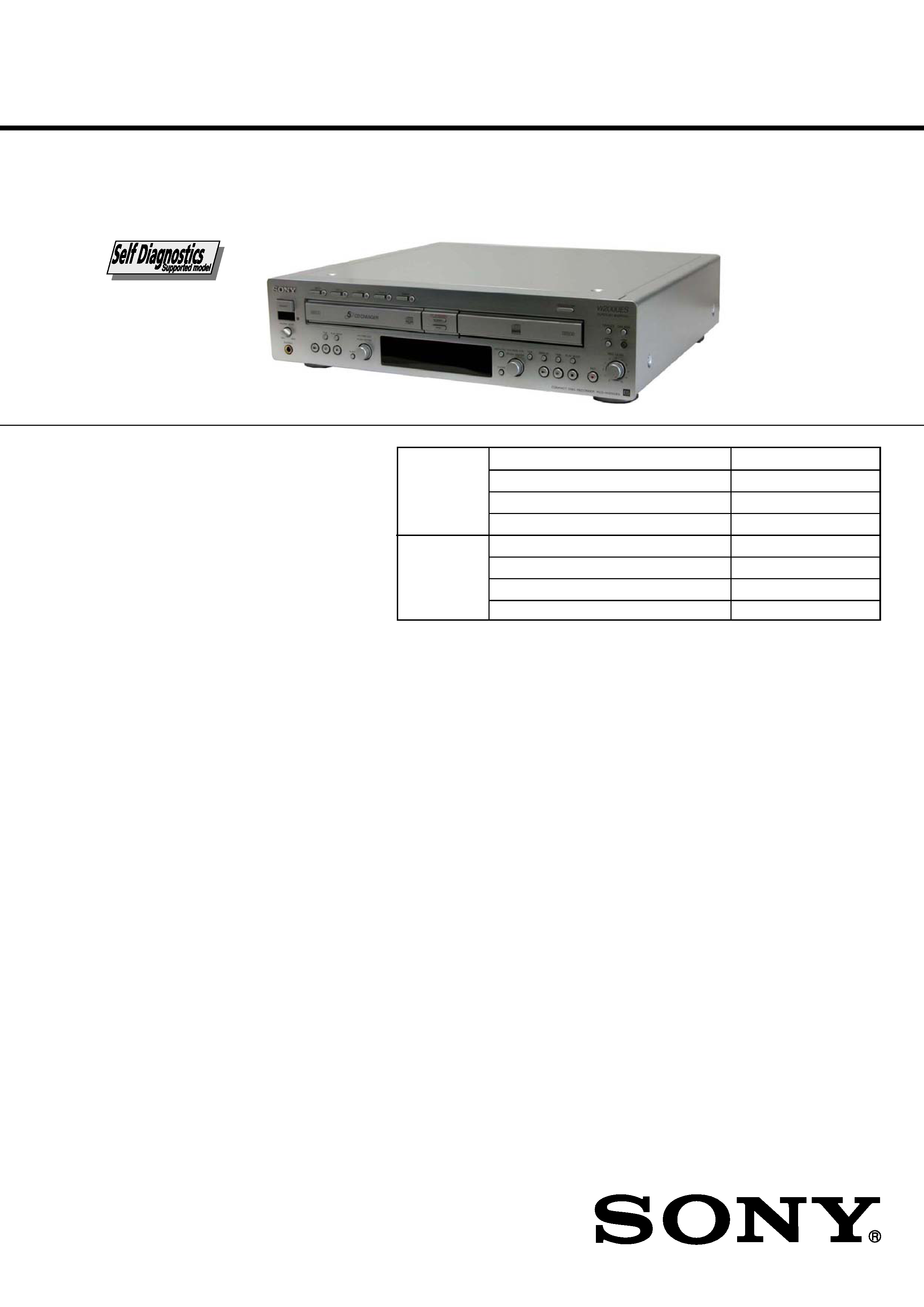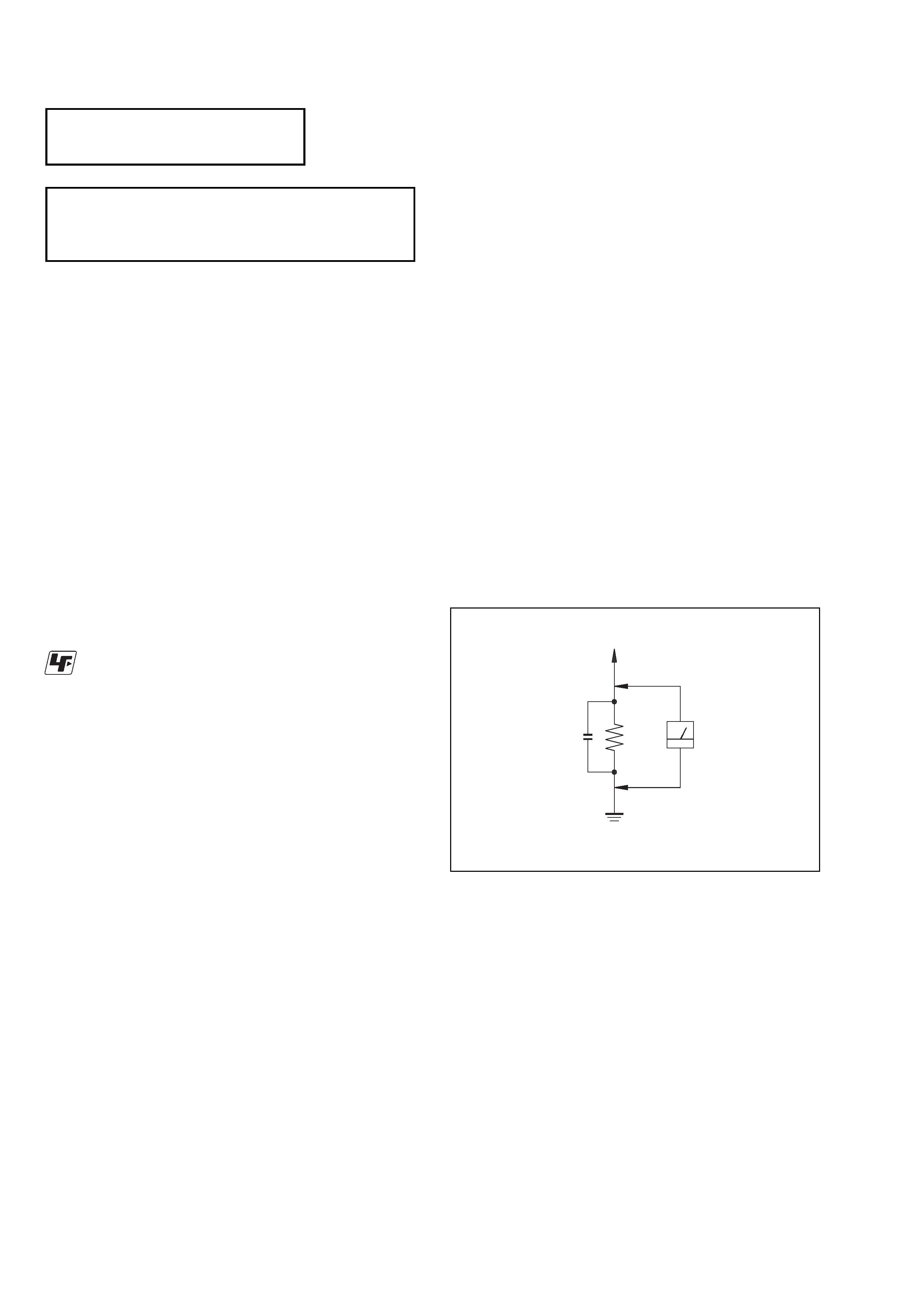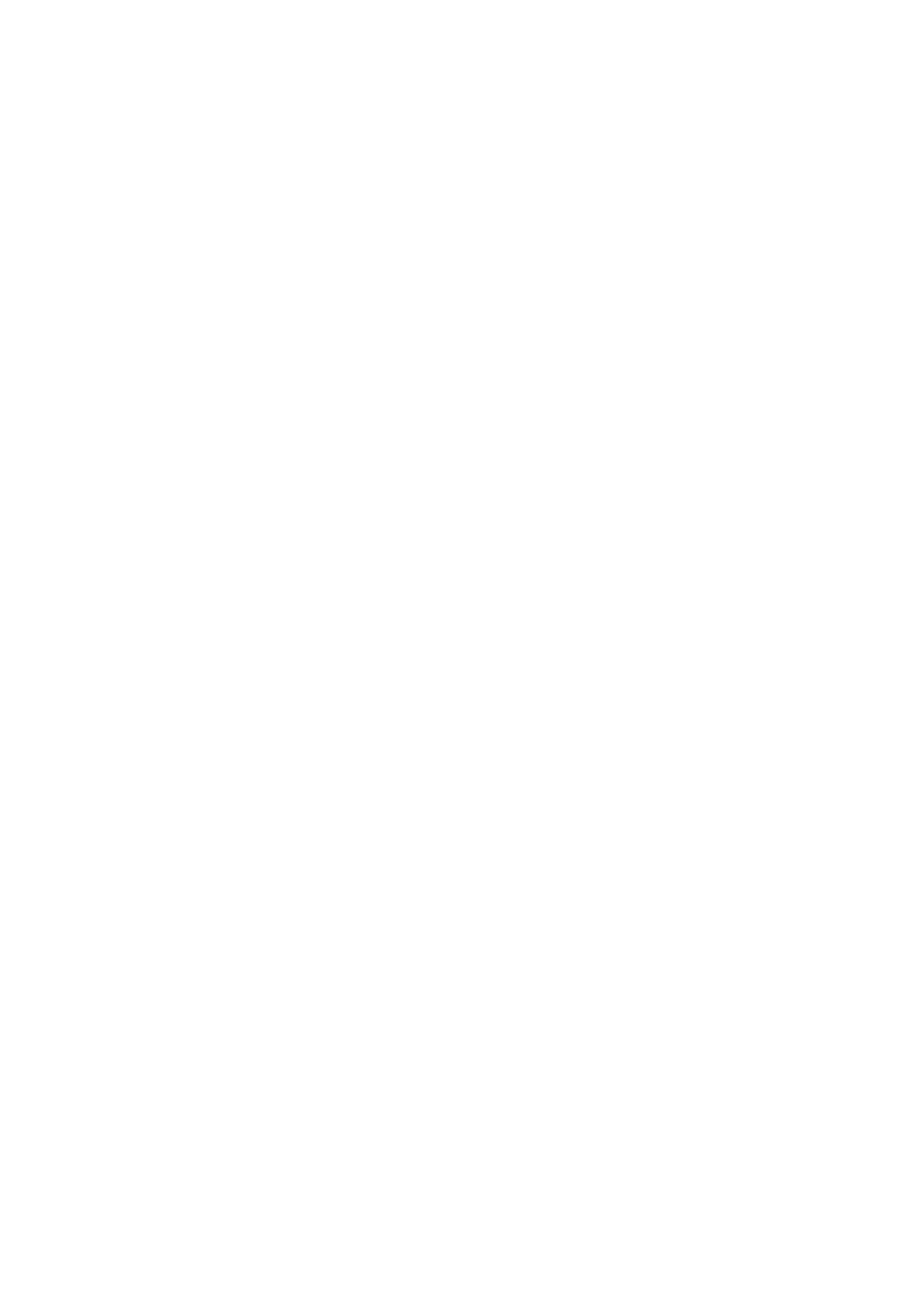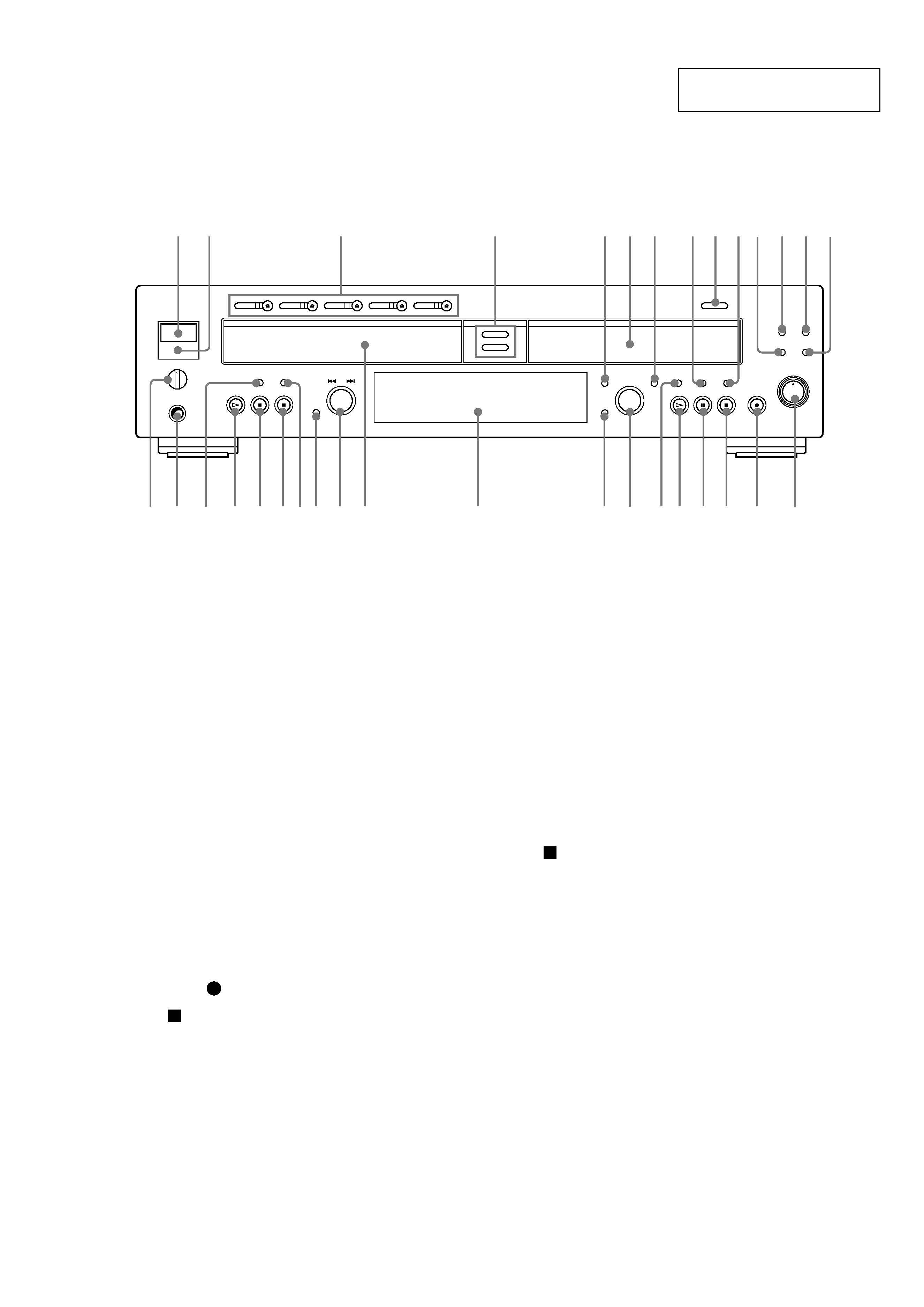
RCD-W2000ES
US Model
SERVICE MANUAL
COMPACT DISC RECORDER
Sony Corporation
Audio Group
Published by Sony Engineering Corporation
9-961-002-03
2005J02-1
© 2005.10
SPECIFICATIONS
Ver. 1.2 2005. 10
Model Name Using Similar Mechanism
RCD-W500C
CD Section
CD Mechanism Type
CDM53L-30B61M
Base Unit Type
BU-30BBD61M
Optical Pick-up Type
A-MAX.4T
Model Name Using Similar Mechanism
RCD-W500C
CD-R/CD-RW CD Mechanism Type
CDM65-RBD2
Section
Base Unit Type
RBD2
Optical Pick-up Type
KRM-220CAA
DECK A (the CD player section)
System
Compact disc digital audio system
Laser
Semiconductor laser
(
= 780 nm)
Emission duration: continuous
Playable discs
CD, CD-R, CD-RW
Frequency response
20 Hz 20,000 Hz (
±0.5 dB)
Signal to Noise Ratio
Over 100 dB during play
Wow and flutter
Below measurable limit
DECK B (the CD-R and CD-RW recording section)
System
Compact disc digital audio system
Laser
Semiconductor laser
(
= 780 nm)
Emission duration: continuous
Playable discs
CD, CD-R, CD-RW
Recordable discs
CD-R, CD-RW (for Audio)
Frequency response
20 Hz - 20,000 Hz (
±0.5 dB)
Signal to Noise Ratio
Over 100 dB during play
Wow and flutter
Below measurable limit
Inputs
ANALOG IN
Impedance : 47 kilohms
(Phono jacks)
Rated input: 500 mVrms
Minimum input: 250 mVrms
DIGITAL OPTICAL IN
(Square optical connector jack)
Optical wavelength: 660 nm
DIGITAL COAXIAL IN
(Phono jack)
Impedance: 75 ohms
Rated output: 0.5 Vp-p,
±20 %
Outputs
ANALOG OUT 1, OUT 2
Rated output: 2 Vrms
(Phono jacks)
Load impedance: over 10 kilohms
DIGITAL OPTICAL OUT 1, OUT 2
(Square optical connector jack)
Wavelength: 660 nm
Rated output: 18 dBm
DIGITAL COAXIAL OUT 1, OUT 2
(Phono jacks)
Rated output: 0.5 Vp-p,
±20 %
Load impedance: 75 ohms
PHONES Load impedance: 32 ohms
(Stereo phone jack)
Rated output: 28mW
General
Power requirements
120 V AC, 60 Hz
Power consumption
28 W
Dimensions (approx.) (w/h/d) incl. projecting parts and control
430 x 110 x 400 mm
(17 x 4 3/8 x 15 3/4 inch)
Mass (approx.)
7.9 kg (17 lbs 7 oz)
Supplied accessories
· Audio connecting cords
Phono plug x 2 (red/white)
y Phono plug x 2 (red/white) (2)
· Remote commander (remote) (1)
· R6 (size AA) batteries (2)
Design and specifications are subject to change without notice.

2
RCD-W2000ES
Laser component in this product is capable
of emitting radiation exceeding the limit for
Class 1.
CAUTION
Use of controls or adjustments or performance of procedures
other than those specified herein may result in hazardous radia-
tion exposure.
Notes on chip component replacement
· Never reuse a disconnected chip component.
· Notice that the minus side of a tantalum capacitor may be
damaged by heat.
Flexible Circuit Board Repairing
· Keep the temperature of soldering iron around 270°C
during repairing.
· Do not touch the soldering iron on the same conductor of the
circuit board (within 3 times).
· Be careful not to apply force on the conductor when soldering
or unsoldering.
SAFETY-RELATED COMPONENT WARNING!!
COMPONENTS IDENTIFIED BY MARK 0 OR DOTTED LINE WITH
MARK 0 ON THE SCHEMATIC DIAGRAMS AND IN THE PARTS
LIST ARE CRITICAL TO SAFE OPERATION. REPLACE THESE
COMPONENTS WITH SONY PARTS WHOSE PART NUMBERS AP-
PEAR AS SHOWN IN THIS MANUAL OR IN SUPPLEMENTS PUB-
LISHED BY SONY.
After correcting the original service problem, perform the fol-
lowing safety checks before releasing the set to the customer:
Check the antenna terminals, metal trim, "metallized" knobs, screws,
and all other exposed metal parts for AC leakage. Check leakage as
described below.
LEAKAGE
The AC leakage from any exposed metal part to earth ground
and from all exposed metal parts to any exposed metal part having
a return to chassis, must not exceed 0.5 mA (500 microamperes).
Leakage current can be measured by any one of three methods.
1. A commercial leakage tester, such as the Simpson 229 or RCA
WT-540A. Follow the manufacturers' instructions to use these
instruments.
2. A battery-operated AC milliammeter. The Data Precision 245
digital multimeter is suitable for this job.
3. Measuring the voltage drop across a resistor by means of a VOM
or battery-operated AC voltmeter. The "limit" indication is 0.75
V, so analog meters must have an accurate low-voltage scale.
The Simpson 250 and Sanwa SH-63Trd are examples of a pas-
sive VOM that is suitable. Nearly all battery operated digital
multimeters that have a 2V AC range are suitable. (See Fig. A)
SAFETY CHECK-OUT
To Exposed Metal
Parts on Set
0.15 µF
1.5 k
AC
Voltmeter
(0.75 V)
Earth Ground
Fig. A. Using an AC voltmeter to check AC leakage.
Unleaded solder
Boards requiring use of unleaded solder are printed with the lead-
free mark (LF) indicating the solder contains no lead.
(Caution: Some printed circuit boards may not come printed with
the lead free mark due to their particular size.)
: LEAD FREE MARK
Unleaded solder has the following characteristics.
· Unleaded solder melts at a temperature about 40
°C higher than
ordinary solder.
Ordinary soldering irons can be used but the iron tip has to be
applied to the solder joint for a slightly longer time.
Soldering irons using a temperature regulator should be set to
about 350
°C.
Caution: The printed pattern (copper foil) may peel away if the
heated tip is applied for too long, so be careful!
· Strong viscosity
Unleaded solder is more viscous (sticky, less prone to flow) than
ordinary solder so use caution not to let solder bridges occur such
as on IC pins, etc.
· Usable with ordinary solder
It is best to use only unleaded solder but unleaded solder may
also be added to ordinary solder.

3
RCD-W2000ES
TABLE OF CONTENTS
1. SERVICING NOTE .......................................................... 4
2. GENERAL .......................................................................... 5
3. DISASSEMBLY
3-1. Case ...................................................................................... 7
3-2. D-Audio Board, Front Panel ................................................ 7
3-3. Power SW, HP, RM, LED, CD SW and Display Boards ..... 8
3-4. Deck A (CDM53L-30B61M), Deck B (CDM65-RBD2) .... 8
3-5. Deck B Tray ......................................................................... 9
3-6. CDR Board .......................................................................... 9
3-7. Motor ASSY (Loading) (M201) ........................................ 10
3-8. Holder (MG) Sub ASSY, Dust Cover ................................ 10
3-9. Optical Pick-Up (KRM-220CAA) ..................................... 11
3-10.Cam (CH) ........................................................................... 11
3-11.Deck A Fitting Base (Magnet) ASSY ................................. 12
3-12.Clamp Motor Board, Motor (Clamp) ASSY (M701) ......... 12
3-13.Fitting Base (Guide) ASSY, Bracket (Chassis) .................. 13
3-14.Tray (SUB) ......................................................................... 13
3-15.Chassis (Mold B) ............................................................... 14
3-16.Load Motor Board, Motor (Loading) ASSY(M702) ......... 14
3-17.Stocker Section .................................................................. 15
3-18.Slider (Selection), Tension Spring (Shutter),
Slider (Shutter) ................................................................... 15
3-19.Gear (Gear A), Gear (Gear B), Gear (U/D Slider) ............. 16
3-20.Gear (Chucking) ................................................................. 17
3-21.BD Board ........................................................................... 17
3-22.Optical Block Section ........................................................ 18
4. TEST MODE ...................................................................... 19
5. ELECTRICAL ADJUSTMENT ................................... 22
6. DIAGRAMS
6-1. Circuit Boards Location .................................................... 53
6-2. Block diagrams BD Section ........................................ 54
Block diagrams CD-R Section .................................... 55
Block diagrams Main Section ..................................... 56
Block diagrams Display/Power Section ..................... 57
6-3. Printed Wiring Board BD Section ............................... 58
6-4. Schematic Diagram BD Section ................................ 59
6-5. Printed Wiring Board Senser/Motor/SW Section ....... 60
6-6. Schematic Diagram Senser/Motor/SW Section ......... 61
6-7. Printed Wiring Board CD-R Section (Side A) ............ 62
Printed Wiring Board CD-R Section (Side B) ............ 63
6-8. Schematic Diagram CD-R (1/4) Section ..................... 64
6-9. Schematic Diagram CD-R (2/4) Section ..................... 65
6-10. Schematic Diagram CD-R (3/4) Section ..................... 66
6-11. Schematic Diagram CD-R (4/4) Section ..................... 67
6-12. Printed Wiring Board MAIN Section (Side A) ........... 68
Printed Wiring Board MAIN Section (Side B) ........... 69
6-13. Schematic Diagram MAIN (1/2) Section ................... 70
6-14. Schematic Diagram MAIN (2/2) Section ................... 71
6-15. Printed Wiring Board D-Audio Section ...................... 72
6-16. Schematic Diagram D-Audio Section ........................ 73
7-17. Printed Wiring Board LED, HP Section ...................... 74
7-18. Schematic Diagram LED, HP Section ....................... 75
7-19. Printed Wiring Board Display, Power Section ............ 76
7-20. Schematic Diagram Display, Power Section ............... 77
7-21. IC Block Diagrams ............................................................ 78
7-22. IC Pin Functions ................................................................ 72
7. EXPLODED VIEWS
7-1. Case Section ........................................................................ 94
7-2. Front Panel Section ............................................................. 95
7-3. Chassis Section ................................................................... 96
7-4. Overall Section (CDM53L-30B61M) ................................. 97
7-5. Chassis (Mold) ASSY Section (CDM53L-30B61M) ......... 98
7-6. Chassis Section (CDM53L-30B61M) ................................ 99
7-7. Base Unit Section (BU-30BBD61M) ............................... 100
7-8. CDM65-RBD2 .................................................................. 101
8. ELECTRICAL PARTS LIST
............................... 102

4
RCD-W2000ES
SECTION 1
SERVICING NOTE
NOTES ON HANDLING THE OPTICAL PICK-UP BLOCK
OR BASE UNIT
The laser diode in the optical pick-up block may suffer electrostatic
break-down because of the potential difference generated by the
charged electrostatic load, etc. on clothing and the human body.
During repair, pay attention to electrostatic break-down and also
use the procedure in the printed matter which is included in the
repain parts.
The flexible board is easily damaged and should be handled with
care.
NOTES ON LASER DIODE EMISSION CHECK
The laser beam on this model is concentrated so as to be focused on
the disc reflective surface by the objective lens in the optical pick-
up block. Therefore, when checking the laser diode emission, ob-
serve from more than 30 cm away from the objective lens.
The emission check enables continuous checking of the S curve.
LASER DIODE AND FOCUS SEARCH OPERATION
CHECK
Carry out the "S curve check" in "CD section adjustment" and check
that the S curve waveform is output three times.
SELF-DIAGNOSIS FUNCTION
When the self-diagnosis function is activated to prevent the player
from malfunctioning, three character service numbers in a combi-
nation with a message appears in the display. In this case, check the
following table.
Message
Explanation
C12/
You are trying to record a disc that cannot be
Cannot Copy
played back in DECK-A or with an external
device, such as CD-ROM or VIDEO CD.
· Remove the disc, and then insert a music CD
for playback.
C13/
Recording has not been completed successfully
Rec Error
because of vibration.
· Relocate the unit in a place free of vibration
and restart the recording again.
The disc you try to record is excessively dirty
(such as oilstained or finger marked) or
scratched. Or the disc is not normal.
· Replace the disc with another one and restart
the recording again.
C14/
The unit did not read the TOC information.
TOC Error
· Insert other discs.
C41/
The sound source you are trying to record is
Cannot Copy
a copy of a commercial music software. Or you
are trying to record on a CD-R/CD-RW
digitally.
· Because of the restriction of the Serial Copy
Management System, you cannot record
copies of commercial music software or
MP3 files on DECK A. Neither can you
digitally record from a CD-R/CD-RW.
· Use analog recording through the ANALOG
IN jack when you record from other units. Or
use Synchro-Recording when you record from
DECK A. (The recording mode is automati
cally changed to analog recording.)
C71/
If this message is displayed
Din Unlock
momentarily, this is not an error. It is caused
by the digital signal during recording.
During recording of a digital sound source,
the connecting cable has been disconnected or
the player of the sound source has turned off.
· Connect the cable or turn on the digital player.

5
RCD-W2000ES
SECTION 2
GENERAL
12
3
4
5 6 7
8 90qa qs qd qf
qg
qh
qj
ql qk
w;
wa
ws
wd
wf
wh wg
wj
wk
wl
e;
ea
es
ed
1 POWER button
2 g(remote sensor)
3 DISC 1-5 A buttons
4 CD SYNCHRO NORMAL/HIGH buttons
5 MENU/NO button
6 Disc tray-Deck B
7 YES button
8 TIME button-Deck B
9 OPEN/CLOSE button-Deck B
0 PLAY MODE button -Deck B
qa INPUT button
qs FINALIZE button
qd DUAL MODE button
qf SBM button and indicator
qg REC LEVEL knob
qh REC
button -Deck B
qj
(stop) button -Deck B
qk
X (pause) button -Deck B
ql
N (play) button -Deck B
w; DISPLAY button
wa
l AMS L/PUSH ENTER-Deck B
ws CLEAR-Deck B
wd Front Panel Display
wf Disc tray-Deck A
wg
l AMS L/PUSH ENTER knob -Deck A
wh ALBUM button
wj PLAY MODE button -Deck A
wk
(stop) button -Deck A
wl
X (pause) button -Deck A
e;
N (play) button -Deck A
ea TIME button -Deck A
es PHONES jack
ed PHONE LEVEL knob
Parts and Controls
This section is extracted from
instruction manual.
